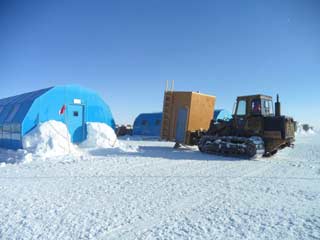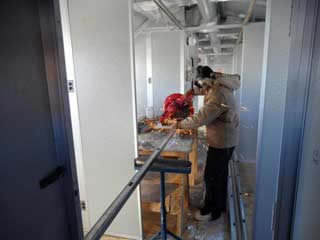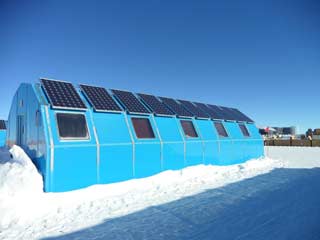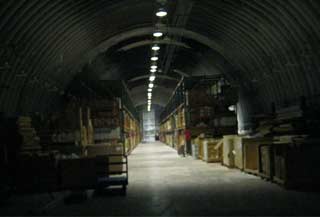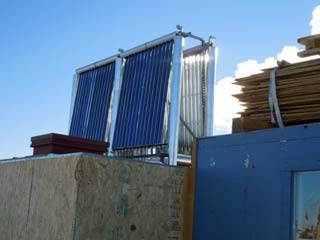2011-12 Photos - Going Green
|
In addition to the off-grid summer tourist/visitor center, a number of more permanent modifications were implemented, or at least planned or tested, to reduce the station energy consumptions. Perhaps one of the more visible projects--two of the Hypertats were thoroughly remodeled and equipped with solar panels. These blue structures were much maligned over the years, in part because they were so close to the noises of the flight line. During my 2005 winter they'd been abandoned for a bit, and the thinking was that they'd be scrapped. Folks thought the cold buried wall panels were brittle and wouldn't survive excavation. Well, it turns out that these structures are much better insulated and easier to heat than the neighboring Jamesways. Seen on the roof here is the late Jesse Peterson (JP). | |
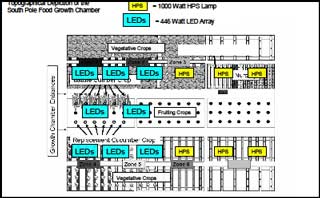 Another energy-saving experiment...half of the 12 1000 watt high pressure sodium (HPS) lamps in the food growth chamber (FGC/greenhouse) were replaced with 8 arrays of LED lights. Each of the HPS lamps uses 1000 watts and requires water cooling; each LED array uses 446 watts. The jury is still out on this one...(DA/JR). |
|
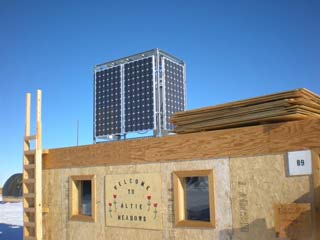 These six 175-watt solar panels (two on the west side as shown; one on each of the other 3 sides and one horizontal panel on top) were installed in 2008-09; two years of NSF daylight data show these average statistics: East side: 10.45 kWh/week South side: 10.38 kWh/week This 2008-09 photo is by Michael Hauke; more information and his report are here. Oh, the aerial photos indicate that more PV panels have been installed on this summer camp bathroom complex. |
|
 A surprising innovation this season...surprisingly these weren't included in the original station equipment which included those energy saving glycol heated dryers. I don't know the detailed numbers, but a typical top loading machine uses about 40 gallons of water, while a front loader uses 20-25 gallons. Another innovation...that larger industrial strength front loader at right was finally repaired and put in service as well, it handles much larger loads with similar water savings. |
|
|
Other items that were studied, but not significantly at Pole, included a Weatherport-type "solar garage" with radiant heating (this is perhaps more useful at field camps); the "solar camp" (a new prototype towable summer camp structure--56' x 22' with seven single rooms, a slab heat system plus solar heating, and PV cells which would generate more power than used), the use of capacitor batteries, which offer very high short-term energy availability and are not degraded by cold temperatures, and the use of plyboo furniture--manufactured from sustainable bamboo materials with little or no VOCs. Credits...Dick Armstrong and John Rand (DA/JR) gave a presentation at the 2012 Polar Technology Conference which included the indicated photos as well as some of the other technical information. Other photos are from 2012 winter site manager Katie Hess (KH) and from summer carpenter Jesse Peterson (JP), who died tragically in a May 2012 canoeing accident in Colorado (May 2012 Denver Post article). Unattributed photos are used that way by request. Next...a robot surveys Old Pole. | |

